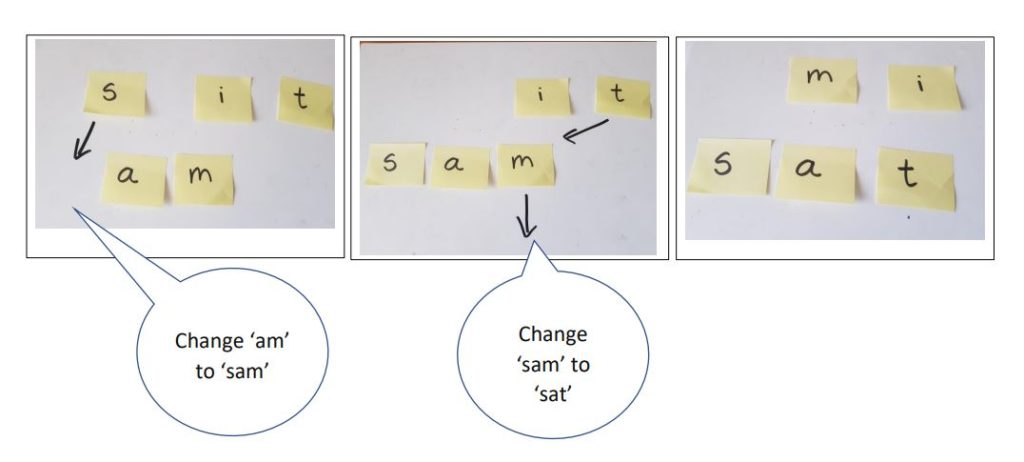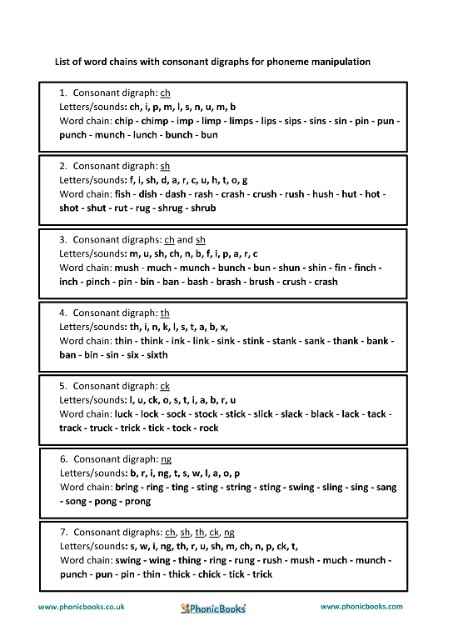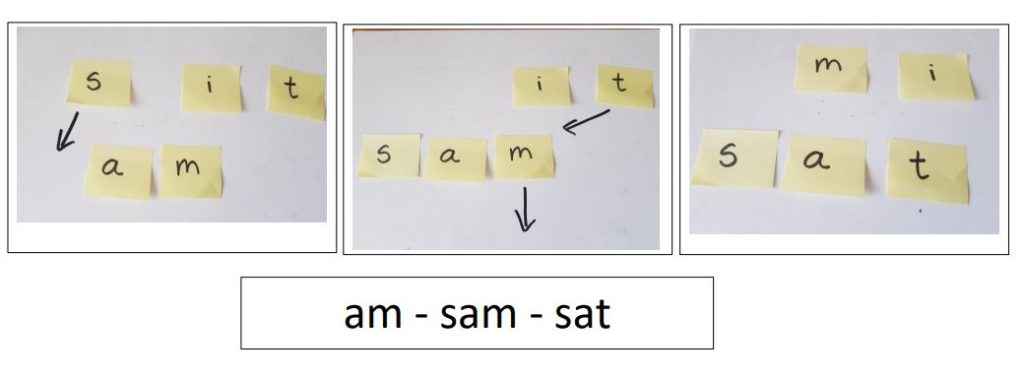Word chains are really important for all children learning to read, especially those who find reading hard. Some programmes call this activity ‘Sound swap’ (Sounds-Write) or ‘Switch it’ (Reading Simplified).
Why word chains are a useful teaching tool
Word chains offer children practice of the underlying skills of reading: blending, segmenting and phoneme manipulation (adding, deleting and swapping sounds in words). These skills come under the umbrella term ‘phonemic awareness’ which is one of the most accurate predictors of reading difficulties. Children with good phonemic awareness are most likely to be good readers. Children who struggle with phonemic awareness may be are risk of reading difficulties. So, word chains should be part of every phonics programme to ensure that children get sufficient practice in all these underlying skills.
How do word chains work?
In a word chain activity the teacher has a list of words that entail only one change from one word to the next. This could be adding a sound, deleting a sound or swapping a sound. The teacher needs to make letter cards of taught letters (make sure that digraphs come stuck together). He/she will ask the pupil to build a word and then to read it, e.g. “build the word ‘dog'”. Then the teacher will instruct the pupil to change the word from ‘dog’ to ‘log’. The teacher moves his/her finger under the word and says the new word. The pupil identifies where the change in the word has occurred and adds/deletes/replaces a letter. The pupil now blends and reads the new word. This activity can be done with all age groups. What we are teaching children is that the letters they see match the sounds they hear. With time the pupil can do this faster, skipping the blending and reading steps.
It is important to note that this is an activity that develops phonemic skills and not code knowledge. It can only be done once the pupils have automatic recall of the letters used in the activity, and are developing their blending and segmenting skills for words with 3–5 sounds. If they don’t have automatic recall, and some blending skills, they are likely to experience cognitive overload.
Here is an example of a word chain ‘am – sam – sat’. (Note that on this occasion a lower case ‘s’ is used for a name and this can be discussed with the pupil.)

How to write your own word chain
You can write your own word chains but it is important to stick to these principles:
- Stick to one-syllable words.
- include only the simple part of the code. It gets too confusing if vowel digraphs and trigraphs are included.
- Make only one change at a time.
- Use real or non-words (let the child know if you are using non-words).
- Avoid using words with irregular spelling patterns, e.g., ‘pik’ which is spelled ‘pick’ in English.
- Include only the letters needed for this activity to minimise confusion.
You can start by using these word chains, which are free on our website.
Click here to download them.


#phonicactivities #phonicsteacher #readingintervention #phonemicawareness #funphonics #phonicsfun


